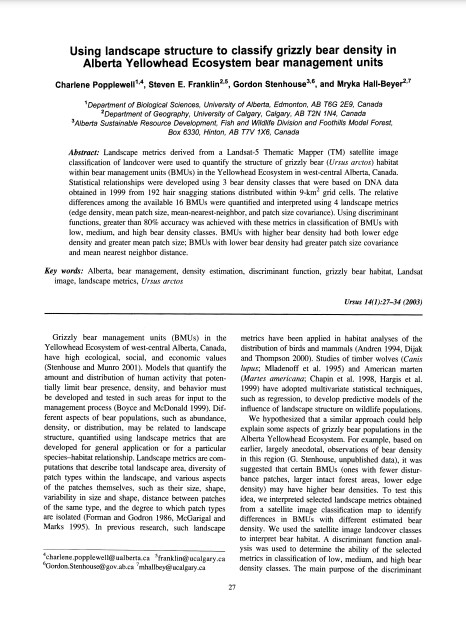Using Landscape Structure to Classify Grizzly Bear Density in Alberta Yellowhead Ecosystem Bear Management Units
Bosque Modelo:
Foothills
Temática:
Conservación
Tipo de documento:
Artículo científico
Resumen
Landscape metrics derived from a Landsat-5 Thematic Mapper (TM) satellite image classification of landcover were used to quantify the structure of grizzly bear (Ursus arctos) habitat within bear management units (BMUs) in the Yellowhead Ecosystem in west-central Alberta, Canada. Statistical relationships were developed using 3 bear density classes that were based on DNA data obtained in 1999 from 192 hair snagging stations distributed within 9-km2 grid cells. The relative differences among the available 16 BMUs were quantified and interpreted using 4 landscape metrics (edge density, mean patch size, mean-nearest-neighbor, and patch size covariance). Using discriminant functions, greater than 80% accuracy was achieved with these metrics in classification of BMUs with low, medium, and high bear density classes. BMUs with higher bear density had both lower edge density and greater mean patch size; BMUs with lower bear density had greater patch size covariance and mean nearest neighbor distance.
Información Bibliográfica
Autor:
Popplewell, C, SE Franklin, GB Stenhouse and M Hall-Beyer.
Revista:
Ursus
Año:
2003
N°:
1
País :
Canadá
Páginas:
27 - 34
Volumen:
14
Idioma:
Ingles
Palabras claves
Alberta, bear management, density estimation, discriminant function, grizzly bear habitat, Landsat image, landscape metrics, Ursus arctos





